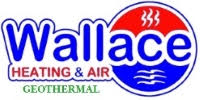In the quest for sustainability and cost-effectiveness, the energy efficiency standards for heating and cooling equipment have undergone significant updates. These standards not only benefit the environment but also bring substantial savings to consumers and businesses alike. In this blog post, we’ll delve into the latest advancements in energy efficiency standards for heating and cooling systems, exploring their implications and benefits.
Understanding Energy Efficiency Standards: Energy efficiency standards regulate the minimum performance requirements for appliances and equipment, ensuring they consume less energy while delivering optimal performance. These standards are pivotal in reducing greenhouse gas emissions, conserving resources, and curbing energy costs.
The Latest Updates: The latest energy efficiency standards for heating and cooling equipment emphasize enhanced performance and reduced energy consumption. Manufacturers are now required to produce systems that meet stricter efficiency criteria, encouraging innovation and technological advancements in the industry.
Key Changes and Implications:
- SEER and EER Ratings: Seasonal Energy Efficiency Ratio (SEER) and Energy Efficiency Ratio (EER) are vital metrics for evaluating the efficiency of air conditioning systems. The updated standards mandate higher SEER and EER ratings, ensuring that new systems consume less energy while providing optimal cooling comfort.
- AFUE Ratings: Annual Fuel Utilization Efficiency (AFUE) ratings determine the efficiency of furnaces and boilers. The revised standards aim to improve AFUE ratings, promoting the adoption of high-efficiency heating systems that maximize energy utilization and minimize waste.
- Incentives for Innovation: Stricter standards incentivize manufacturers to invest in research and development to create cutting-edge heating and cooling technologies. This fosters a competitive market environment, where energy-efficient solutions become more accessible to consumers.
Benefits for Consumers and Businesses:
- Cost Savings: Energy-efficient heating and cooling systems consume less energy, resulting in reduced utility bills for homeowners and businesses. Over time, the savings accrued from lower energy costs offset the initial investment in high-efficiency equipment.
- Environmental Impact: By lowering energy consumption, energy-efficient systems contribute to a reduction in greenhouse gas emissions and alleviate strain on natural resources. Adopting eco-friendly heating and cooling solutions aligns with sustainability goals and promotes environmental stewardship.
- Enhanced Comfort and Performance: High-efficiency systems not only conserve energy but also deliver superior comfort and performance. Improved technology ensures consistent temperature control, quieter operation, and better air quality, enhancing the overall indoor environment.
Conclusion: The latest energy efficiency standards for heating and cooling equipment mark a significant milestone in promoting sustainability and innovation within the HVAC industry. By embracing these advancements, consumers and businesses can reap the benefits of reduced energy costs, improved comfort, and a healthier planet. As we continue to prioritize energy efficiency, we pave the way for a greener, more sustainable future.

